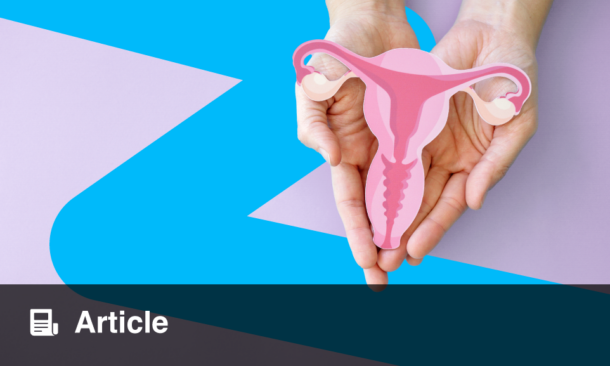Abstract
Cryopreservation is an integral part of the current methods of assisted reproductive technology (ART). In the past two decades, slow freezing has been replaced worldwide by vitrification due to its association with improved survival rates and clinical outcomes comparable to fresh embryo transfers. Successful embryo vitrification programmes have led to a significant reduction in the incidences of two major complications of ART: ovarian hyperstimulation syndrome and multiple gestations. Multiple embryo transfer cycles from the single ovum aspiration cycle have had a cumulative effect on the numbers of live births. Oocyte vitrification has also helped women to delay their pregnancies for medical or social reasons. This has made oocyte banking a viable option for better synchronisation of oocyte donation programmes. The emerging field of ovarian tissue vitrification has made fertility preservation possible for women undergoing gonadotoxic therapy. In this review, we have discussed the basic principles and methodology of slow freezing and vitrification along with its need and impact on ART.
INTRODUCTION
The term vitrification is derived from the Latin word ‘vitreum’ meaning ‘glass’. It describes the process of cryopreservation using high initial concentrations of cryoprotectant and ultrarapid cooling to solidify the cell into a glass-like state without the formation of ice. Ever since the birth of the first baby from a frozen embryo in 1983, and the first pregnancy from a frozen oocyte in 1986, interest in cryopreservation techniques has grown tremendously. Over the past 30 years, two main techniques of cryopreservation have been used in clinical practice; namely, slow freezing (SF) and vitrification. Due to better success rates, SF has been replaced by vitrification in most centres across the world for the cryopreservation of embryos and oocytes, and, in certain circumstances, for ovarian tissue.1-3
Since the introduction of vitrification, the number of frozen embryo cycles has increased tremendously across the world, increasing the cumulative success rates of assisted reproductive technologies (ART) without the fear of complications such as ovarian hyperstimulation syndrome (OHSS) and multiple pregnancies. According to the 2010 report of The International Committee for Monitoring Assisted Reproductive Technologies (ICMART), the number of frozen embryo transfer (FET) cycles increased substantially during 2008–2010, from 204,427 cycles in 2008 to 260,861 cycles in 2010, amounting to a 27.6% increase.4 The percentage of frozen thaw cycles compared to autologous initiated cycles (fresh and frozen) increased from 22.4% in 2008 to 26.5% in 2010. Japan, followed by the USA and Australia, conducted the largest number of FET cycles. In some countries, such as Switzerland, Finland, the Netherlands, Sweden, and Iceland, the proportion of cryopreserved embryo transfers is >50%.4 The differences in the number of FET cycles among European countries are mainly due to policies requiring fewer numbers of embryos to be transferred which, in turn, have led to supernumerary embryos available for cryopreservation.
THE PRINCIPLE OF CRYOBIOLOGY
The basic principle of cryobiology is to shift the pendulum from cell death to immortality at low temperatures. This can be achieved by eliminating the two main causes of cell death (ice formation5 and lethal concentrations of solutes6) while maintaining the functional capacity of intracellular organelles. There are a number of cryoprotectants that, upon exposure, facilitate the expulsion of intracellular water and thus reduce the intracellular ice formation. This is achieved either by permeating the cell membrane and displacing water via an osmotic gradient (using propanediol, dimethyl sulfoxide, or ethylene glycol), and/or by providing a continuous gradient without permeating the membrane (using sucrose). Permeating cryoprotectants also balance other intracellular solutes, which are lethal at high concentrations. These hyperosmotic, lethal conditions also occur in the domains between ice crystals in the extracellular environment as the temperature is reduced and, as a consequence, further dehydration of the cell occurs. The extent of dehydration depends on the rate at which the temperature is decreased7 and the permeability of the cell(s) to water.8 These are fundamental principles in cryopreservation that are applied in different ways in SF and vitrification.
SLOW FREEZING
In SF, dehydration of both oocytes and embryos is carried out without excessive shrinkage by exposure to permeating and nonpermeating cryoprotectants. During SF, the dehydration process is thought to continue until -30°C, after which any remaining water is super cooled.9 In SF, equilibration of oocytes or embryos is carried out by exposure to one or more dehydrating solutions for 10–15 minutes before loading into plastic straws, which are then heat sealed and placed in the chamber of a programmable freezing machine that slowly (in increments of ˜0.3°C) reduces the temperature to ˜-30°C. During this process, ice nucleation (seeding) is induced manually between -5°C and -8°C. Upon reaching the temperature of -30°C, a rapid temperature reduction (at ˜-50°C/min) to -150°C is carried out before storing the straws in liquid nitrogen (LN2). While thawing, a rapid temperature rise followed by rehydration with decreasing concentrations of permeating and non-permeating cryoprotectants is carried out.
VITRIFICATION
Vitrification is also based on the principle of dehydration. In contrast to SF, vitrification allows solidification of the cell(s) and the extracellular milieu into a glass-like state without the formation of ice. To achieve successful vitrification, a reduction in water content and a highly viscous cytoplasm are necessary.10 This is achieved by exposure to high concentrations of permeating and non-permeating cryoprotectants, which leads to extreme cellular shrinkage. In order to minimise the impact of the hyperosmotic conditions, the exposure time is reduced to 1 minute.11 This approach was first introduced in human embryology for cleavage stage embryos12 and then for oocytes13 and pronuclear stage embryos.14,15
The major concerns associated with exposure to a high concentration of a single permeating cryoprotectant are lethal effects16 or impaired development,17 and are dealt with by combining multiple cryoprotectants18 to reduce the individual cryoprotectant toxicity while achieving a highly viscous solution.16 In practice, vitrification is routinely achieved by exposure of oocytes or embryos initially to low concentrations of permeating cryoprotectants (commonly combinations of ethylene glycol, dimethyl sulfoxide, or propanediol), followed by a short (≤1 minute) exposure to high concentrations before loading onto a variety of carriers (Cryotop,19 Cryoloop,20 Hemi straw,21 and Flexipet22) in a very small (0.1–2.0 mL) volume to ease the rapid cooling process. Rapid reduction in temperature (>10,000°C/minute) is achieved by immediate exposure to LN2, in either an open or closed system. Equivalent rapid warming is also required, which is followed by stepwise rehydration.
In the open method, embryos and oocytes are directly exposed to LN2 to increase the cooling/warming rates and thereby improving the efficiency of the procedure.23 The concern with the open method is that embryos and oocytes are not safely protected from further contact and potential cross-contamination during storage. As an alternative, closed devices have been devised to avoid direct contact of the samples with LN2 during vitrification and storage.24,25 It should be noted that not all closed systems available commercially are completely free of any possible sources of contamination.23 Furthermore, a slower cooling/warming rate in closed systems can have an effect on the survival and success rates. There is no report, for open or closed systems, showing disease transmission during vitrification.26 However, to ensure biosafety during cryopreservation, it is always advisable to use sterile approaches,27 provided there is no compromise on adequate cooling and, particularly, warming rates.
Vitrification requires a long learning process and intense focus of the embryologist performing the task. Even though primarily there are just two steps, equilibration and vitrification, within each step timing control has proved to be critical. As the manual process has stringent skill requirements, and variation in success rate and cell survival rate is observed significantly across operators, the new era of research is being directed toward using a robotic approach for automated vitrification and thawing of embryos. In 2015, Liu et al.28 reported the first robotic system, RoboVitri, for vitrification of mammalian embryos.
EMBRYO VITRIFICATION
Since the report of the first live birth using vitrified-warmed cleavage stage embryos in 1998 by Mukaida et al.,12 followed by the first vitrified blastocyst pregnancy in 2000 described by Yokota et al.,29 there has been continuous research and advances in the field of embryo vitrification.
Indications
Surplus embryos
When in vitro fertilisation (IVF) was first introduced, fresh embryo transfer (ET) was the norm. However, to avoid risk of multiple pregnancies and to prevent wastage of supernumerary embryos, cryopreservation became an essential part of ART.
Segmentation of cycle
One of the lethal complications of ovulation induction and ART is OHSS. A new strategy, proposed by Devroey et al.,30 comprising of a planned ‘freeze all’ of all embryos in a fresh cycle and transfer in a subsequent frozen embryo cycle, has led to the concept of OHSS-free clinics.31 The other indications for segmentation, when pregnancy rates are compromised in fresh transfer, are progesterone elevation on day of trigger, a poor or thin endometrium during stimulation, a significant endometrial polyp, or fluid in the endometrial cavity.
Preimplantation genetic screening/preimplantation genetic diagnosis
Preimplantation genetic screening/preimplantation genetic diagnosis involves testing an embryo for chromosomal or specific monogenic disorders before ET. This requires a biopsy of an embryo on Day 3 or Day 5. It is indicated for use in patients with known genetic disorders, recurrent miscarriages, recurrent implantation failure, advanced maternal age, and severe male factor infertility. To avoid the probabilities of mosaicism in Day 3 embryos, trophectoderm biopsy of Day 5/6 embryos has become regular practice. Since the embryos may take more than 5 days to become suitable for biopsy and the biopsy results may take some time, freezing of all of the biopsied blastocysts with FET in a subsequent cycle is a preferred option.32
Cryo-pooling of embryos
In poor responders, especially those with advanced maternal age, embryos of 2–3 cycles are pooled to collect sufficient blastocysts that can be tested for preimplantation genetic screening. Transferring the genetically normal embryos increases the pregnancy rate.
‘Freeze all’ for all
The objective of the ‘freeze all’ policy is to replace the embryos in a more favourable intrauterine environment, without possible adverse effects of supraphysiologic hormone levels over the endometrial receptivity.33 This concept is strengthened by the results of a recent meta- analysis by Roque et al.,34 which concluded that the use of FET, compared with fresh ET, significantly improved clinical and ongoing pregnancy rates. The authors showed a substantial increase of 32% in the ongoing pregnancy rate when FET was performed compared to fresh ET. However, this conclusion should be cautiously interpreted as only three randomised control trials (RCT) were included in the meta-analysis, with a total of 633 cycles. Secondly, the cryopreservation technique and stage of vitrification differed in studies, and, thirdly, all studies included good prognosis patients. To date, there is a lack of high-quality RCT detailing ‘freeze all’ for all, but it seems to hold potential for the future in ART.35 However, it does rely heavily on a good vitrification technique.
SUCCESS RATES OF EMBRYO VITRIFICATION
Vitrification is reported to be associated with a significantly increased post-thaw survival rate compared with SF in two literature reviews and meta-analyses.27,36 A recent meta-analysis from seven RCT revealed a significantly higher embryo cryosurvival following vitrification compared to SF (relative risk: -1.59; 95% confidence interval: 1.30–1.93).26 With vitrification, the reported post-thaw survival rates for blastocysts were 94.5% compared to 21.4% with SF. Similarly, for cleavage stage embryos the post-thaw survival rates were 91.5% and 49.8% for vitrification and SF, respectively.37
In terms of pregnancy outcomes of vitrified-warmed versus slow frozen thawed embryos, a study by Stehlik et al.38 showed comparable results for blastocyst transfers (53% and 51%, respectively), while Rama Raju et al.39 showed more promising results for eight-cell embryos (35% and 17.4%, respectively). However, in 2014 Li et al.40 reported a significantly higher clinical pregnancy rate (CPR) per thaw cycle with vitrified warmed blastocysts compared to slow frozen blastocysts (31.3% and 21.5%, respectively). In the study, the likelihood of a live delivery per thaw cycle was found to be 47% higher for vitrified blastocyst transfer cycles compared with SF blastocyst transfer cycles.40 A recent meta-analysis, including three RCT reporting CPR, also found a higher CPR per cycle with embryo vitrification compared to SF (relative risk: 1.89; 95% confidence interval: 1.00–3.59).26
SAFETY OF EMBRYO CRYOPRESERVATION
Few studies have compared the impact of vitrified thawed ET on obstetric and neonatal outcomes.41,42 Shi et al.41 did not find any significant difference in obstetric and perinatal outcomes when vitrified ET were compared to fresh ET, but it was mentioned that mean birth weight was higher in the vitrified group compared to the fresh ET group.41 Recently, Belva et al.43 analysed 1,072 pregnancies occurring after embryo vitrification on Day 3 and Day 5 and concluded that neonatal health parameters, including the prevalence of congenital malformations (3.4% in the vitrified ET group and 3.9% in the fresh ET group), were similar to, or slightly better than, those after fresh ET.43 Though the perinatal outcomes are promising after transferring vitrified warmed cycles, a few recent studies have raised concerns about an increased risk of ‘large for gestational age’ babies following FET.44,45
OOCYTE VITRIFICATION
The first report of a birth after oocyte cryopreservation was published 25 years ago.46 However, for the last 15 years the overall efficiency has remained low, hampering its widespread application. The large size and spherical shape of oocytes interfere with even distribution of cryoprotective additives. Moreover, some subcellular structures are especially sensitive to cryoinjuries, and the fact that oocytes consist of one cell decreases the chance of recovery from a serious injury. Eventually, improvements in freezing techniques by vitrification did overcome most of these hurdles, now giving pregnancy rates comparable to those following the use of fresh oocytes.
INDICATIONS FOR OOCYTE VITRIFICATION
Oocyte Freezing for Fertility Preservation
Medical reasons
Chemotherapy and radiotherapy are generally gonadotoxic and can lead to premature ovarian failure in the future. Young women suffering from cancer can preserve their fertility by oocyte freezing if referred in time. Even for patients who have less time to start their chemotherapy, there are random start stimulation protocols that have similar results when compared to conventional protocols. Other than cancer, certain women who are carriers of BRCA-1 and BRCA-2 requiring prophylactic oophorectomy, who suffer from autoimmune disorders (systemic lupus erythematosus, Behçet’s disease, etc.) affecting ovarian reserve, and those prone to premature ovarian failure (mosaic Turner’s syndrome, fragile X permutation) may be candidates for oocyte freezing. Women undergoing gender reassignment procedures should also be counselled and given options for fertility preservation, as removal of the ovaries destroys the ability to have genetically related children and the masculinising medications used may lead to diminished fertility.
Social reasons
Oocyte freezing is a viable option for women who want to delay marriage and/or pregnancy for career-related reasons, before their biological clock starts running out. In many developed countries nowadays, companies provide sponsorship for egg freezing so that women can concentrate on their work. As the rate of miscarriage also increases after 30 years of age, freezing eggs gives a woman a chance of having her own healthy genetic child whenever she is prepared for it.
Oocyte Freezing for Ethical Reasons
Until recently, embryo vitrification was banned in Italy. Even though it is now legally allowed, it is not preferred and may be considered as an offence by some followers of certain religions or faiths, such as Catholics.47 In such circumstances, oocyte vitrification is a viable option rather than discarding surplus embryos.
Non-Retrieval of Sperm
In cases of non-retrieval of sperm on the day of the egg retrieval process, oocytes can be vitrified and then thawed at a later date when sperm is obtained in subsequent testicular biopsies.
Donor Oocyte Programme/Egg Banking
Egg banking negates the need of synchronisation between donor and recipient and hence reduces the anxiety of both the patient and the treating physician. It also helps in giving the recipient wider options for selecting a donor without compromising pregnancy results. The clinical outcomes following fresh versus vitrified oocytes in egg donation programmes have been shown to be comparable in multiple studies, including one RCT.48-50
Oocyte Pooling in Poor Responders
In patients with a poor response to ovarian stimulation, oocytes from multiple stimulation cycles can be collected and vitrified. Once an adequate number of oocytes has been reached, intracytoplasmic sperm injection can be performed to create an adequate number of embryos, thereby increasing the inseminated cohort equivalent to that of normal responders, giving better pregnancy rates.51,52
SUCCESS RATES
According to current evidence, oocyte survival after vitrification and warming ranged between 84% and 96.7% in different studies.25,48,49,53,54 The data from donor oocyte vitrification studies show fertilisation rates between 74% and 78%, implantation rates (IR) varying between 26.8% and 40.8%, and CPR per transfer between 33.3% and 65.0%.48-50 The CPR per thawed oocyte was between 4.5% and 6.0%. Studies comparing clinical outcomes in infertile populations using fresh and vitrified oocytes have shown fertilisation rates in the vitrified group varying between 64.5% and 85.0%, IR between 17% and 41%, CPR per ET between 35% and 57%, and CPR per thawed oocyte between 6.5% and 12.0%.25,53,54
The Human Oocyte Preservation Experience (HOPE) Registry was set up in 2008 to measure the clinical outcome of using cryopreserved oocytes. It compared the outcomes of two techniques used for oocyte cryopreservation, SF versus vitrification, and a subgroup analysis was also carried out comparing results between donor and autologous oocytes. In the subgroup analysis using vitrified donor versus vitrified autologous oocytes, IR, CPR, and live birth rate were all significantly lower in the autologous oocyte group (45.8% versus 26.9%, 62.6% versus 30.0%, and 52.1% versus 17.4%, respectively).55
Most studies suggest that post-thaw survival rates of vitrified oocytes are superior to those that have undergone SF protocols.55-57 Only one RCT directly compared pregnancy rates with SF versus vitrified supernumerary oocytes and demonstrated that vitrification resulted in improved oocyte survival (81% versus 67%), fertilisation rate (77% versus 67%), and CPR per thawed oocyte (5.2% versus 1.7%) compared to SF.58 It has also been suggested that meiotic spindle recovery occurred faster in oocytes that had been vitrified rather than cryopreserved with a SF technique.59
A recent review and meta-analysis assessed the efficacy of oocyte vitrification in comparison to fresh oocytes and SF. Five studies were included in the meta-analysis and they concluded that rates of ongoing pregnancy, top-quality embryo, embryo cleavage, and fertilisation rates did not differ between the vitrification and the fresh oocyte groups.60 The oocyte survival rate and fertilisation rates were higher in vitrified versus SF oocytes. Vitrification also resulted in a higher rate of top-quality embryos (22.4% versus 8.0%) and embryo cleavage rate (Day 2: 64.6% versus 47.7%; Day 3: 53.0% versus 33.3%) when compared with SF.60
SAFETY OF OOCYTE VITRIFICATION
Despite concerns regarding spindle abnormalities in cryopreserved oocytes, the incidence of chromosomal abnormalities in human embryos obtained from cryopreserved oocytes is no different than that of control embryos. A study of 200 infants born from 165 vitrified oocyte pregnancies revealed no difference in birth weight or congenital anomalies among those born from vitrified oocytes compared to children conceived after fresh IVF.61 Though vitrified thawed oocytes have comparable pregnancy results, these results should be taken with caution as most of the studies come from donor programmes and from patients with a good prognosis, which may not be applicable to all patients.
OVARIAN TISSUE CRYOPRESERVATION
Ovarian tissue can be cryopreserved as cortical tissue biopsies, strips, or the whole ovary. It is an option for patients who require immediate gonadotoxic treatment for aggressive malignancies, when there is no sufficient time to allow the woman to undergo ovarian stimulation, oocyte retrieval, and cryopreservation of oocyte and/or embryos. It is the only option available for fertility preservation in young prepubertal girls or in women with hormone-sensitive malignancies. It may be transplanted back to the original site in the pelvis near the primary blood supply of the ovary (orthotopic) or to an extra pelvic (heterotopic) site, commonly involving subcutaneous tissues such as the forearm and abdomen.
There are two methods of cryopreservation of ovarian tissue: SF and vitrification. Until recently, the method of choice has been SF. However, vitrification is gaining popularity, owing to good results obtained with vitrification of oocyte and embryos. In a systematic comparison of vitrification and SF of ovarian tissue followed by tissue culture to assess subsequent oocyte viability, vitrification was found to have a similar outcome to SF with preservation of the morphologic integrity of the ovarian tissue.62 Although the survival of oocytes was similar between the two methods, granulosa cell survival and the integrity of the stroma were better with vitrification. To date, there are limited clinical studies on ovarian tissue vitrification, and further comparative studies are needed between SF and vitrification to draw any conclusions.
VITRIFICATION AND CUMULATIVE PREGNANCY OUTCOMES
The average probability of a frozen embryo resulting in a living child lies in the range of 19.7–24%, and, today, babies born from cryopreserved embryos represent approximately half of the total number of babies born from assisted reproduction.4 It is unquestionable that successful cryopreservation of zygotes/embryos has greatly enhanced the clinical benefits and cumulative conception rates for couples following a single cycle of ovarian stimulation and IVF. Results in the literature, expressed as the augmentation of the delivery rate per oocyte harvest, are between 31% and 34%.63 The data show that women who had transfers of fresh and frozen embryos experienced considerably improved live birth rates by using their cryopreserved embryos.64
SHORTCOMINGS OF VITRIFICATION
Even though there are multiple reports suggesting excellent clinical outcomes post-vitrification thaw transfers, there are many questions regarding probable cryoinjuries, such as spindle deformities, DNA damage, and aberrant genomic imprinting, while cells are being exposed to mechanical, chemical, and thermal stresses during the process.65 Multiple reports have demonstrated that when possible subcellular damages were analysed, mature oocytes were less tolerant to cooling than embryos. This is due to spindle sensitivity to cryoprotectants and low temperature.66 Unquestionably, the genomic imprinting of cryopreserved oocytes is affected by a complex relationship among the impaired fertility, ART, and cryopreservation.67
CONCLUSION
Vitrification has revolutionised ART practice. Optimised embryo and oocyte cryosurvival rates, and improved clinical outcomes achieved with this technique, have allowed us to give a personalised approach to patients. The concept of OHSS-free clinics and elective single ET, eliminating the chances of multiple pregnancies, has become realistic. Moreover, successful numbers of ET cycles from a single aspiration cycle have reduced the need of multiple stimulation cycles. In addition, oocyte vitrification has made fertility preservation and oocyte banking much more viable options.









